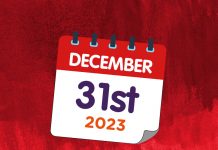The last REACH registration deadline on 31 May 2018 completes what started already in 2008: collecting information on all the chemicals in use on the European market and closing the gap of not having data on existing chemicals to do proper risk management. It is yet another important milestone towards the safer use of chemicals worldwide, and the European chemical industry is pivotal in making this happen.
All existing chemicals manufactured or imported in the European Economic Area between 1 and 100 tonnes a year need to be registered by 31 May 2018 with the European Chemicals Agency (ECHA). This is the last deadline under REACH, and completes the transition period of 10 years for existing chemicals under the regulation.
This last deadline is the most challenging one, both for companies and ECHA.
Firstly, the sheer volume of registrations will be two to three times more than in the previous deadlines. Secondly, many of the companies involved are expected to be inexperienced and small and medium-sized enterprises (SMEs). Thirdly, there is not that much information available on the low volume substances. This means that companies need to budget both time and money for generating the data needed for registration.
Smaller companies do not have the same resources as large ones. They are going through their portfolios very carefully, assessing which chemicals are really needed for the success of their business, and what the market demand and conditions are. As REACH registration is a long-term investment in product stewardship, a knowledge of the future market is also important. But, looking at the future in the current economic and political climate is not easy.
Based on anecdotal feedback we get from our stakeholders, many registrants, maybe even a majority of them, are leaving the decision to register very late. This is obviously a challenge for their customers who would need certainty that the supply of their critical substances will continue even after the deadline. We are also interested in companies’ registration intentions to help us to better prepare for the workload next spring, and can only encourage them to be transparent to the extent possible and share this information with us.
Leaving the registration decision to the last moment creates additional challenges, as registration takes time even for the simplest cases. If a company needs to start from scratch, it has to reserve time for analytics for proper substance identification, discussions on data and cost sharing with co-registrants, and for gathering the information needed for registration. We know that many potential registrants are importers who might find it difficult to get information from non-EU suppliers.
Data on the substance’s properties, its impact on human health and the environment, and instructions for its safe use need to be provided in the registration dossier. When planning the schedule, it is good to take into account that that the laboratories doing analytical testing may be fully booked for months. Thankfully, there are now a variety of ways in which companies can estimate the likely effects of their chemicals without testing on animals. It is now even mandatory to consider them before conducting any tests on vertebrate animals. Using alternatives to animal testing is not a quick fix though – they require specific expertise as their use needs to be scientifically justified in the registration dossier.
It is clear that complying with REACH is a demanding task, but it is manageable. More than 10,000 companies have already successfully registered since 2010 with help from the national authorities, industry associations and ECHA. All these organisations are ready to support also the 2018 registrants. ECHA’s REACH 2018 web pages offer a one-stop shop for registration advice in 23 EU languages.
With less than a year to go to the deadline, companies should be at full speed with their preparations. We expect to receive up to 60,000 registrations for 25,000 substances. This estimation is based on the calculations of the European Commission back in 2007, which we are trying to amplify by surveying industry associations and companies.
In June 2017, companies have submitted around 10 000 registrations for close to 5 000 low volume substances, with German, British and Dutch companies topping the chart. This is in line with our expectations. We have received fewer 1-10 tonne dossiers than estimated, whereas the 10-100 tonnes dossiers are coming in as predicted. This might be because companies registering more than 10 tonnes a year need to prepare a chemical safety report and, therefore, start to prepare early.
It is clear that the peak of submissions has not started yet, but we expect an increase in the last quarter of 2017. We are preparing now for the biggest peak to arrive one to three months before the 31 May next year.
I encourage you to register as soon as you are ready. This allows you to avoid a last minute rush. If you have to submit several registrations, and this is the first time you are doing it, a good idea is to choose one or two substances to start with so that you can get familiar with our process and tools. Another important aspect is to start discussions on forming the joint submission as soon as possible. This is a crucial step that can delay the progress later on.














